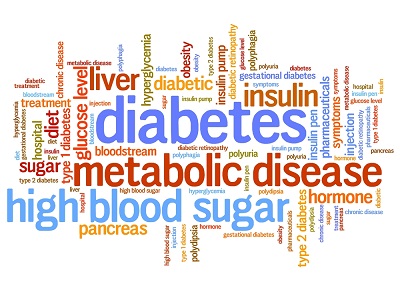 Diabetes is a medical problem of sugar (glucose) metabolism that, unfortunately, many people have. As our nation grows older, the prevalence of diabetes will grow.
Diabetes is a medical problem of sugar (glucose) metabolism that, unfortunately, many people have. As our nation grows older, the prevalence of diabetes will grow.
To illustrate the prevalence, here are some statistics:
- 29.1 million adults are diagnosed with diabetes, and type 2 diabetes accounts for 90% to 95% of all cases.
- 1 in every 10 adults ages 20 to 64 has diabetes.
- 1 in 4 seniors ages 65 and older has diabetes.
- 1.7 million new cases of diabetes were diagnosed in adults in 2012
- 86 million Americans ages 20 years or older had pre-diabetes in 2012 that is up 7 million from 2010.
- 1 out of 3 babies born in 2000 will develop diabetes.
These are staggering numbers, and they are only expected to rise. We live in a world plagued by junk food and lack of movement, and until we make lifestyle changes and educate ourselves about all that is involved in this chronic disease, the numbers will just keep rising.
There are many myths around diabetes that cloud people’s perception of what this condition is like.
Here are the top ten myths around diabetes:
Myth 1 – Diabetes only runs in certain families.
The truth is that diabetes can occur even if you have no family history of diabetes. Scientists are beginning to understand that, while there are genes you can inherit that make it more likely for you to develop diabetes, it is a disease that has both genetic and environmental origins.
Even if you have the genes for diabetes from your parents or grandparents, you can still, through diet and exercise, not get diabetes at all. If, on the other hand, you don’t exercise and you don’t eat right, the metabolic changes can occur in your system that can trigger the onset of diabetes, even without a family history.
Myth 2 – You can’t get diabetes if you are of normal weight.
The truth is that, while being overweight is a risk factor for diabetes, you can get it even if you are of normal weight. Diabetes is a condition that tends to worsen if you are overweight or obese and tends to improve if you lose weight. Still, depending on your family history and genetics, you can be of normal or even low weight and have diabetes be a part of your life.
Myth 3 – Diabetes is a disease of adults.
There are two types of diabetes, type 1 and type 2. Type 1 diabetes is a condition that almost always originates in children or young adults. There is a slightly different condition called type 2 diabetes that increases in incidence as we age. But with the increase in obesity in children, more children are getting the disease early in life.
Myth 4 – You can’t have diabetes without symptoms.
In many cases of newly diagnosed type 2 diabetes, there are no specific symptoms to notice. If the sugar is very high, there may be fatigue, frequent urination and an elevated thirst but, in cases of mild or early diabetes, there can be no symptoms at all. This is why blood sugar screening for diabetes is so important.
Myth 5 – In diabetes, there is a lack of insulin.
In type 2 diabetes alone, there is an initial lack of insulin. In type 2 diabetes, by far the most common type of diabetes, there may even be elevated insulin levels. The problem is one of insulin resistance in the cells of the body. It causes the pancreas to respond by releasing even more insulin.
Eventually, however, the pancreas becomes overworked and gives out less and less insulin.
Myth 6 – Diabetes isn’t that serious.
Well controlled diabetes through diet, exercise, and medications can lead to a long and healthy life. However, with poor control, the high blood sugar situation can lead to heart disease, stroke, kidney failure, eye disease, nerve disease, diabetic coma, and premature death.
Myth 7 – Eating sugar causes diabetes.
Diabetes is caused by a particular combination of heredity and lifestyle. Eating sugar is just one of those lifestyle factors to consider when preventing or controlling diabetes. In some cases, if you are otherwise eating healthy, it is okay to eat a small amount of sugar in your diet.
Myth 8 – If you get diabetes in pregnancy, you will always have it.
Gestational diabetes is a disorder of high blood sugar in pregnancy. Most women will begin to have normal blood sugars shortly after delivering their baby but having gestational diabetes puts you at a greater risk of getting type 2 diabetes later in life.
Myth 9 – Diabetics have to eat special “dietetic” foods.
There is nothing special about foods marketed for diabetics. A regular diet low in refined sugars with plenty of healthy carbohydrates and some protein will be enough to control diabetes without a special diet.
Myth 10 – You can’t eat starchy foods when you’re diabetic.
You should aim for 45-60 grams of carbohydrate and that includes mild to moderate amounts of starch. When eaten with other kinds of foods, you don’t have to eliminate starchy foods like potatoes, peas, corn or yams from your diet.






